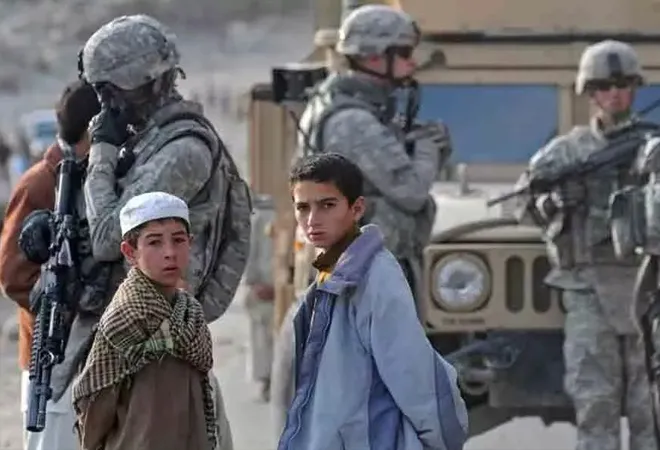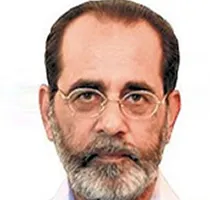Twenty years ago, the events of 9/11 changed the world, hurtling it into a new era. A “global war on terror” was launched. That era has ended, and presumably, so has America’s global war on terror.
Historians prefer a date to bookend, but that depends on who you ask. On August 31, the United States (US) concluded its withdrawal from Afghanistan, taking comfort in having undertaken the largest airlift evacuation, but it was the Taliban that was celebrating its victory.
In 2001, the US boasted of an invincible military. In 1998, secretary of state, Madeleine Albright, famously described America as “the indispensable nation”. Explaining why the US used military power, she said, “We stand tall and we see further than other countries into the future, and we see the danger here to all of us.”
Back then, North Atlantic Treaty Organization (NATO) operations in the Balkans had stunned the world with the display of military superiority, using laser-guided precision weapons with seamless digital integration of Command, Control, Communications, Computers, Intelligence, Surveillance and Reconnaissance (C4ISR) capabilities. The Russian economy had shrunk to the size of that of Portugal. China was just entering the World Trade Organization (WTO).
Today, it is a different world. The age of strategic rivalry has returned. The Taliban, ably helped by Pakistan, the US’s frontline ally in its global war on terror, has badly dented the notion of US invincibility. Despite President Joe Biden’s efforts in recent months to reassure allies that “America is back”, there is a wariness about both US commitment and its competence. The images of people hanging on to the C-17 Globemaster as it taxied for take-off at Kabul airport will endure, at least as much as that of the last American helicopter out of Saigon in April 1975, hours before the Viet Cong stormed the city.
Despite President Joe Biden’s efforts in recent months to reassure allies that “America is back”, there is a wariness about both US commitment and its competence.
In 2001, the US embarked on two operations. The first was against the Taliban and al-Qaeda, but it was never successfully completed. General Pervez Musharraf, who had been threatened into cooperating, pleaded that he couldn’t, unless he got the Pakistan army officials — serving and retired — who had been working with the Taliban out of Afghanistan. The US played ball and the Kunduz airlift began in November. It lasted nearly a week, and between 2,000 and 3,000 people were airlifted, including not just the Pakistanis but also several senior Taliban and other jihadi leaders.
The second botch-up was in December 2001, when Osama bin Laden was cornered at Tora Bora. Brigadier James Mattis, deployed in Kandahar (later defence secretary General Mattis), asked for reinforcements to surround the area, but Central Command chief, General Tommy Franks, declined as he was preoccupied with finalising the operational plans for the Iraq invasion for Donald Rumsfeld. The task was subcontracted to a local Afghan commander Hazrat Ali, and bin Laden, with his group, managed to escape across the Durand Line.
The outcome became apparent in 2005, once the US was distracted with Iraq, and the Taliban had regrouped to begin its insurgency with suicide attacks and improvised explosive devices (IEDs).
In parallel, the US launched a second operation in Afghanistan with the Bonn Conference. The objective was to rebuild Afghanistan as a democratic, functioning State that would not play host to, or allow its territory to be used by, terrorist groups. Except that the US never accepted the idea of “nation-building” and the United Nations mission in Kabul, headed by veteran Algerian diplomat Lakhdar Brahimi was only permitted “a light footprint”.
The cardinal sin was that the US (and allied) military forces got increasingly drawn from a counter-terrorism operation into a counter-insurgency operation that meant winning “hearts and minds”, a challenge for a foreign force that lacked empathy for a conservative, tribal society and its traditions. Counter-insurgency should have been done by the local forces, but the newly-created Afghan administration headed by President Hamid Karzai had neither the resources nor the agency, and in the process, became “a puppet regime” and the US forces represented “foreign occupation”.
The die was cast once the process of legitimisation of the Taliban began with the opening of its Doha office in 2013. The US exit was a given; the only question was when. Once direct negotiations began in 2018, the timeline became apparent. The US withdrawal deal signed in Doha in February 2020 was sold to the world as a “peace deal”, with a “reformed” Taliban, a Taliban 2.0.
The cardinal sin was that the US (and allied) military forces got increasingly drawn from a counter-terrorism operation into a counter-insurgency operation that meant winning “hearts and minds”, a challenge for a foreign force that lacked empathy for a conservative, tribal society and its traditions.
If there were any illusions about a Taliban 2.0, these were dispelled with the announcement of the new interim government on September 7. To underline that this was now a Pakistani enterprise, the chief of the Inter-Services Intelligence (ISI) lieutenant-general Faiz Hameed visited Kabul on September 4 for confabulations with different actors.
The Doha group that was the political face of the Taliban engaging with the international community has been relegated to the second rung. Many of the key fighting units on the ground have not found a place in the new dispensation, presumably because they would be less amenable to foreign direction. The Quetta Shura finds strong representation, especially those who were also around in the 1990s Taliban government.
The clear winners are the Haqqanis, who have long been known for their proximity to ISI. Not only does Sirajuddin Haqqani control the all-powerful interior ministry, but his family and friends also enjoy key positions in intelligence, refugees, communications and the borders ministries. Most important, the Haqqanis will control the appointment of governors to seven eastern provinces (Loya Paktia) that border Pakistan. A nascent resistance movement centred in Panjshir Valley has petered out. Demonstrations in cities that were drawing international attention have now been banned. Yet, even those countries that promoted the idea of a Taliban 2.0 seem to be hesitant about rushing forward with political and diplomatic recognition.
America has ended its “forever war”; the Afghans are preparing for a long winter.
This commentary originally appeared in Hindustan Times.
The views expressed above belong to the author(s). ORF research and analyses now available on Telegram! Click here to access our curated content — blogs, longforms and interviews.




 PREV
PREV


